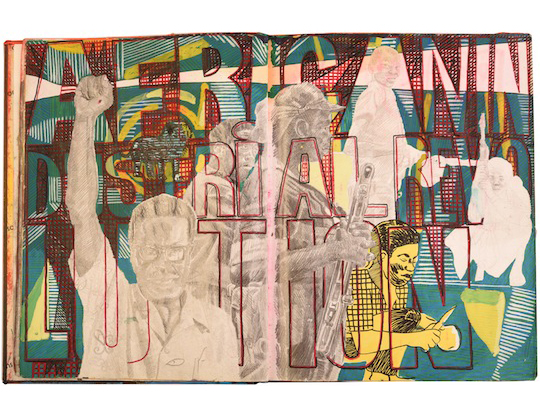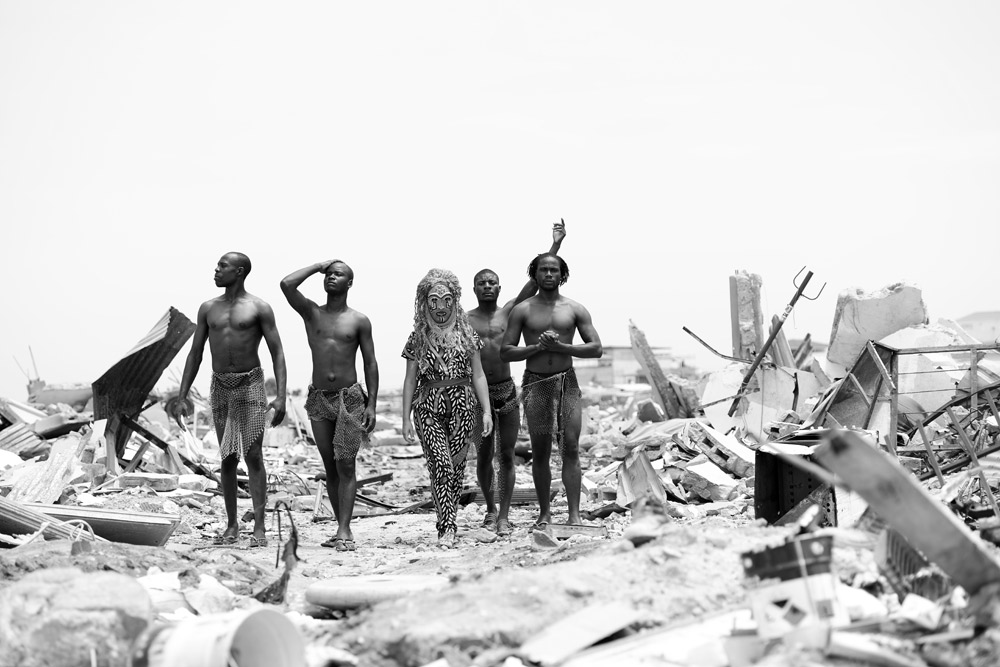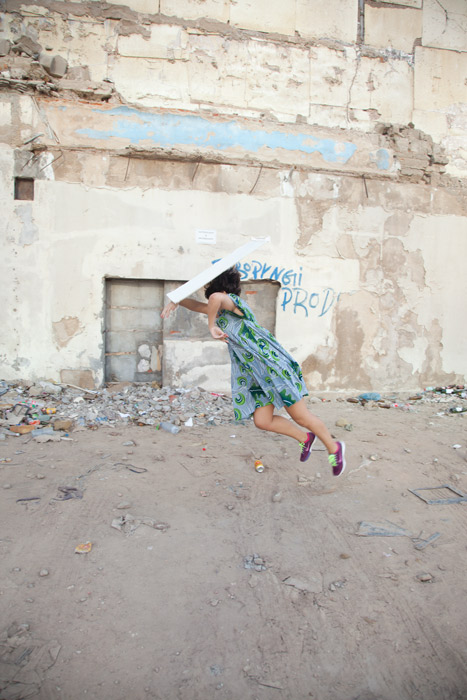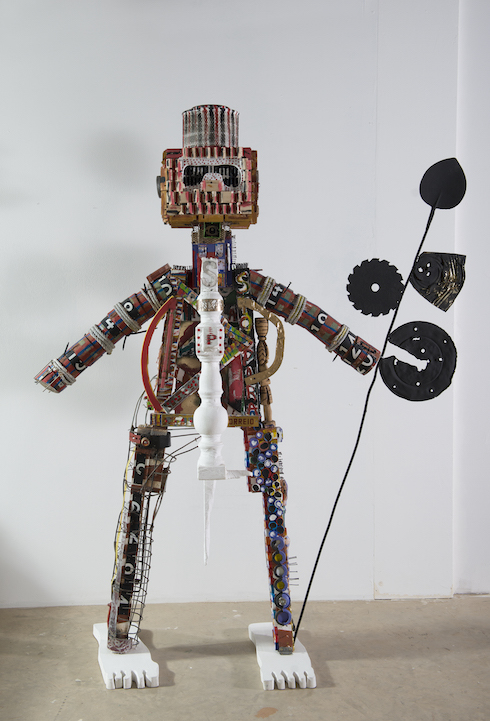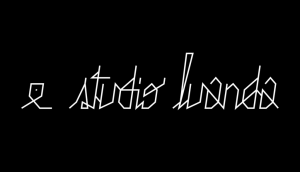
Group Exhibition :
African Industrial Revolution | e-studio Luanda
Tiwani Contemporary London
10 July – 15 August 2015
About:
Tiwani Contemporary is pleased to announce African Industrial Revolution, a project by e-studio Luanda. e-studio Luanda is an artist collective and studio complex founded in 2012 in the Angolan capital by Francisco Vidal, Rita GT, António Ole and Nelo Teixeira. The collective has played an instrumental role in fostering the visual arts scene in Luanda, producing regular exhibitions and running an art education programme. Vidal and Teixeira are part of the official selection for the Angolan Pavilion at the 56th Venice Biennale, commissioned by Rita GT. The gallery recently announced its representation of Vidal.
Francisco Vidal, African Industrial Revolution, 2015.
A.I.R. will be the collective’s first exhibition in the UK, taking the form of an open studio within Tiwani Contemporary’s space. The overall aim of the project is to release a work of art directly into a system that depends on digital and analog ideas around free reproduction and distribution, investigating how information is disseminated today.
RitaGT, Axiluanda, 2014.
RitaGT, Fall. Action no.1, Luanda, 2014.
Transforming the gallery space into a temporary artist studio, the first week of the project will be punctuated by daily sessions, during which the artists will activate the U.topia Machine and produce work in-situ. The U.topia Machine is a 60 x 60 cm plywood box containing an all-in-one toolkit for producing work. The machine was born out of e-studio’s own experience of international mobility (Rita GT and Francisco Vidal moved to Luanda in 2012 and recently returned to Lisbon), and the challenges this has brought about. How to continue making work with limited access to space, resources and materials? Beyond operational constraints, the question that surfaced and has since animated much of the collective’s artistic output was: how to translate artistic practices from one geographical context to another?
Antonio Ole, Zone Liberté, 1994-2001.
A.I.R. forms part of e-studio Luanda’s ongoing exploration of the condition of the post-modern, peripatetic and itinerant artist. Effectively functioning as a mobile studio, the project envisions a system of art making and exhibiting that is no longer tied in with a sense of place, and highlights the status of the artist as an international worker. In a move to unite artistic forms with utilitarian intentions, A.I.R. borrows from the legacy of Constructivist and Bauhaus artists, whose taste for social experiment and revolutionary politics through art and design have evidently inspired e-studio.
Nelo Texeira, Papa Mike 1, 2014.
Imitating the internet’s ability freely to reproduce, distribute, borrow and share ideas, the artists are creating work that sits within the emerging concept of what has come to be defined as post-internet art. Whilst much of the dialogue around the genre has so far taken place in Europe and North America, e-studio’s residency at Tiwani Contemporary will create the opportunity to widen the geographical perspective to this discourse.
Follow the artists’ blog http://africanindustrialrevolution.com/ for daily updates on their work-in-progress.

